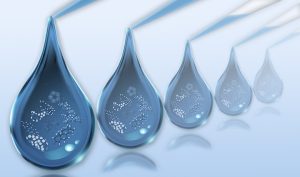Drop Date: April 2023
Maximizing the Scientific Value of Saliva as a Biospecimen: A Guide for Research from Dr. Douglas Granger to the Research Community
Maximizing the Scientific Value of Saliva as a Biospecimen: A Guide for Research from Dr. Douglas Granger to the Research Community

Saliva attributes as a biospecimen include versatility, cost-effectiveness, ease of use, and low participant burden. Not surprisingly, oral fluid has rapidly become a research specimen of interest.
This is especially true in protocols requiring multiple sample collections within short time periods or for participant retention over longer periods across longitudinal studies. As the number of studies utilizing saliva samples has increased, so too has our specialized understanding of how sampling schemes can best be designed and applied to maximize scientific value and impact.
A Strategy Proposition
In a recent paper published in Psychoneuroendocrinology, Riis and colleagues (2021) discussed the case that salivary testing has advanced to a level of precision where it is now appropriate to pose an important question:
The study observed that less than 5% of the variation in salivary analyte levels was attributable to laboratory-based measurement error in qualified labs (Riis et al 2021). In contrast, the variation in salivary analyte levels can differ dramatically from time to time. These results suggest that resources spent towards understanding variation in analyte levels within person from time to time can be a greater beneficial investment than expensing those resources to document technical errors observed between duplicate tests of the same samples.
Increasing the number of sampling time points within subject creates the opportunity to model intra-individual change in important ways, and the gain in statistical power this achieves will advance our understanding of the correlates and concomitants of individual differences in analyte levels.
Understanding The Benefits
By implementing this strategy, researchers can also take advantage of other potential benefits that come with collecting and analyzing a larger sample size. For example, tactical benefits could include piloting and testing a subset of samples for biomarkers that are exploratory and novel to your research. Moreover, with additional sampling time points, investigators may choose to assay some samples for their immediate research purposes, but also archive other samples for future laboratory analysis.
These advanced, data-informed tactics can be adapted to your study in ways that empower your project to maximize the value added by the inclusion and integration of salivary bioscience. Data-informed tactics backed by statistical proof further enable confidence in researchers who select a qualified lab to test a subset of additional samples.
Employing The Strategy
Researchers looking to apply this strategy should consider a few factors. Collecting a subset of your samples and choosing a qualified lab to assay the samples is important. Qualified labs will need to have statistical proof that they have the ability to test specific analytes in singlet rather than duplicate. The SalivaLab possesses data that can instill confidence in researchers to test a subset of samples in singlet.
Considering that principal investigators have already invested in recruiting participants and obtaining resources for their studies, the cost-to-benefit ratio of the inclusion of more sampling time points is favorable. This is especially true when compared to the cost of conducting an entirely new study.
Lastly, Institutional Review Boards (IRB) have different policies for additional testing of biological specimens. Contact your IRB for recommendations and guidelines on consenting participants, archiving samples, and future analysis.
Need Advice? Contact Salimetrics
| Interested researchers are encouraged to get in touch with an Expert through the Salimetrics Collaboratory. For researchers ready to apply this strategy, Salimetrics can recommend which biomarkers can be tested in singlet at the SalivaLab, empowering you to include more sampling time points in your studies. In addition, Salimetrics offers salivary sample testing and archiving services at a minimal cost, freeing up principal investigators from the hassle of managing and storing samples for future analyses.
We welcome you to contact Salimetrics for more information and ideas on how to advance your next study, strategies, and study design. We look forward to your future contributions to the salivary bioscience community. |
REFERENCES & RELATED RESEARCH
Riis, J. L., Ahmadi, H., Hamilton, K. R., Bryce, C. I., Blair, C., & Granger, D. A. (2021). “The case for the repeatability intra-class correlation as a metric of precision for salivary bioscience data: Justification, assessment, application, and implications.” Psychoneuroendocrinology vol. 128 (2021): 105203.
*Note: Salimetrics provides this information for research use only (RUO). Information is not provided to promote off-label use of medical devices. Please consult the full-text article.
 Contact: Salimetrics (USA)
Contact: Salimetrics (USA)